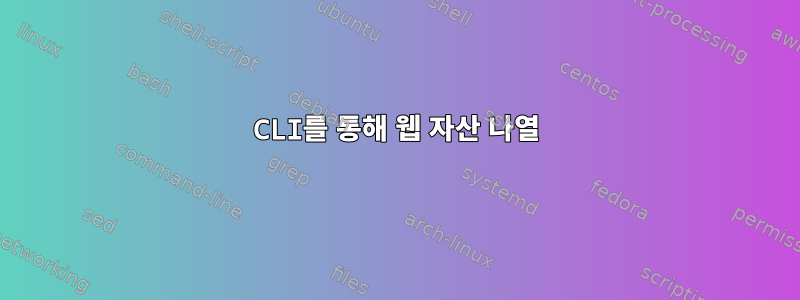
브라우저를 사용하여 웹페이지를 탐색할 때 페이지에 대한 코드를 다운로드한 후 브라우저는 모든 리소스(CSS, JS 및 이미지)를 다운로드합니다.
페이지 자산(내부 및 외부 자산)에 대한 모든 URL을 나열하는 방법이 있습니까?
아이디어는 외부 및 내부 자산의 변화를 모니터링하는 것입니다.
답변1
나는 당신이 원하는 것을 할 수 있는 Python 스크립트를 작성했습니다:
#!/usr/bin/env python2
# -*- coding: ascii -*-
"""list_assets.py"""
from bs4 import BeautifulSoup
import urllib
import sys
import jsbeautifier
import copy
# Define a function to format script and style elements
def formatted_element(element):
# Copy the element
formatted_element = copy.copy(element)
# Get beautified element text
formatted_text = jsbeautifier.beautify(formatted_element.text)
# Indent all of the text
formatted_text = "\n".join([" " + line for line in formatted_text.splitlines()])
# Update the script body
formatted_element.string = "\n" + formatted_text + "\n "
# Return the beautified element
return(formatted_element)
# Load HTML from a web page
html = urllib.urlopen(sys.argv[1]).read()
# Parse the HTML
soup = BeautifulSoup(html, "html.parser")
# Extract the list of external image URLs
image_urls = [image['src'] for image in soup.findAll('img') if image.has_attr('src')]
# Extract the list of external CSS URLs
css_urls = [link['href'] for link in soup.findAll('link') if link.has_attr('href')]
# Extract the list of external JavaScript URLs
script_urls = [script['src'] for script in soup.findAll('script') if script.has_attr('src')]
# Extract the list of internal CSS elements
styles = [formatted_element(style) for style in soup.findAll('style')]
# Extract the list of internal scripts
scripts = [formatted_element(script) for script in soup.findAll('script') if not script.has_attr('src')]
# Print the results
print("Images:\n")
for image_url in image_urls:
print(" %s\n" % image_url)
print("")
print("External Style-Sheets:\n")
for css_url in css_urls:
print(" %s\n" % css_url)
print("")
print("External Scripts:\n")
for script_url in script_urls:
print(" %s\n" % script_url)
print("")
print("Internal Style-Sheets:\n")
for style in styles:
print(" %s\n" % style)
print("")
print("Internal Scripts:\n")
for script in scripts:
print(" %s\n" % script)
내가 사용하는 (주요) 패키지는 다음과 같습니다.
스크립트는 외부 리소스의 URL과 내부 리소스의 요소 태그 자체(가정화/미화 포함)를 인쇄합니다. 쉽게 수정하거나 개선할 수 있는 결과 형식을 지정하는 방법에 대해 즉석에서 스타일을 선택했습니다.
실제로 이를 보려면 다음 HTML 파일 예제( assets.html)를 참조하세요.
<!doctype html>
<html lang=en>
<head>
<meta charset=utf-8>
<title>assets.html</title>
<link rel="stylesheet" type="text/css" href="mystyle.css">
<style>
body {
background-color: linen;
}
h1 {
color: maroon;
margin-left: 40px;
}
</style>
<script src="myscripts.js"></script>
</head>
<body>
<script>alert( 'Hello, world!' );</script>
<img src="https://www.python.org/static/community_logos/python-logo.png">
<p>I'm the content</p>
</body>
</html>
로컬 파일에서 스크립트를 실행하는 방법은 다음과 같습니다.
python list_assets.py assets.html
출력은 다음과 같습니다.
Images:
https://www.python.org/static/community_logos/python-logo.png
External Style-Sheets:
mystyle.css
External Scripts:
myscripts.js
Internal Style-Sheets:
<style>
body {
background - color: linen;
}
h1 {
color: maroon;
margin - left: 40 px;
}
</style>
Internal Scripts:
<script>
alert('Hello, world!');
</script>
마지막으로, 여러분에게 유용할 수 있는 참고 자료로 사용하는 몇 가지 게시물은 다음과 같습니다.


